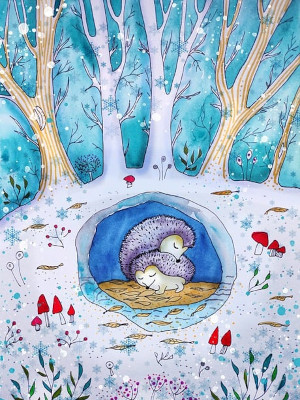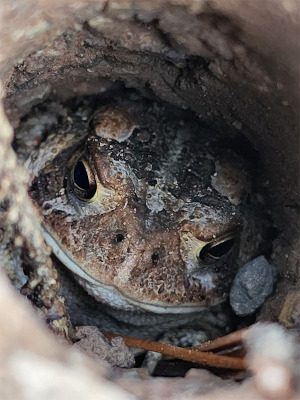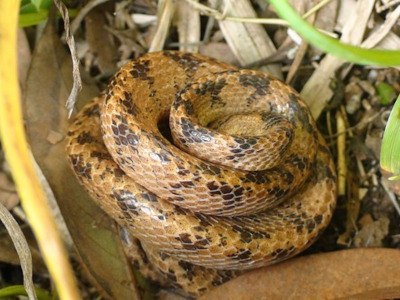Small mammals such as chipmunks, hamsters, and bats use hibernation to survive cold winters without searching for food or migrating. They lower their metabolism to conserve energy. In hot climates, animals also undergo a similar form of hibernation called aestivation to survive extreme heat, drought, or lack of food.
Animals get ready for hibernation by eating a lot in summer and autumn to store fat for the winter. Animals do not sleep for the entire duration of hibernation. When animals, such as hedgehogs, hibernate, their body temperature drops to match the outside environment. Their metabolic rate decreases significantly, and their heart rate slows down. Breathing patterns also change, with long gaps between breaths. Furthermore, animals eat a lot and store fat to sustain themselves during hibernation. Additionally, cold-blooded animals, including woodfrogs, even produce antifreeze to survive being frozen. Hibernation can be risky for animals due to factors like insufficient fat reserves, harsh weather conditions, and the risk of being attacked by predators.
Animals can hibernate for a long time. In 2012–13, five edible dormice from the Vienna Woods hibernated for 11 months due to a lack of food, and one female dormouse was inactive for 346 days. Most animals in hibernation do not remain completely torpid for more than 30 days. Torpor is a short period of suspended animation that typically lasts less than a day. During this time, an animal’s breathing, heartbeat, body temperature, and metabolism are decreased. Torpor saves energy briefly and can assist animals in enduring harsh conditions like chilly nights. Hazel dormice and fat dormice, for example, may wake up and move around for several hours or longer during periods of “euthermia.” This allows them to expel waste products and sometimes even have a snack. Bats, like pipistrelles, may briefly forage for insects on warm winter nights before returning to hibernation. Hedgehogs also naturally wake up about once every 5–27 days and may use these breaks to find a new nest.
How does climate change impact hibernation?
The length of hibernation is influenced by factors such as day length, temperature, and food availability. Changes in temperature, especially in warmer springs, can cause hibernators to wake up too early when their fat reserves are low and there is not enough food. Studies have shown that for every 1°C increase in annual temperature, hibernation is shortened by an average of 8.6 days, leading to decreased survival rates. Some species, such as hazel dormice and hedgehogs, are hibernating for fewer weeks than they did in the past due to global warming. Other animals, such as newts and insects, are also experiencing changes in their behavior and life cycles due to climate change. The exact effects on these species are still uncertain.
Four unusual sleepers in the animal kingdom
The dwarf fat-tailed lemur of Madagascar is the only primate known to aestivate, using fat reserves in its tail during a long, dry season.
The common poorwill, a small nightjar, is the only bird that hibernates. To escape winter, it conceals itself among piles of rocks.
The Antarctic cod can enter a dormant state by lowering its metabolism. It’s blood also contains antifreeze.
Male garter snakes are the first to come out of their winter homes to find females to mate with. Some males release female scents to deceive other males.
Sources:
https://www.discoverwildlife.com/animal-facts/what-is-hibernation



